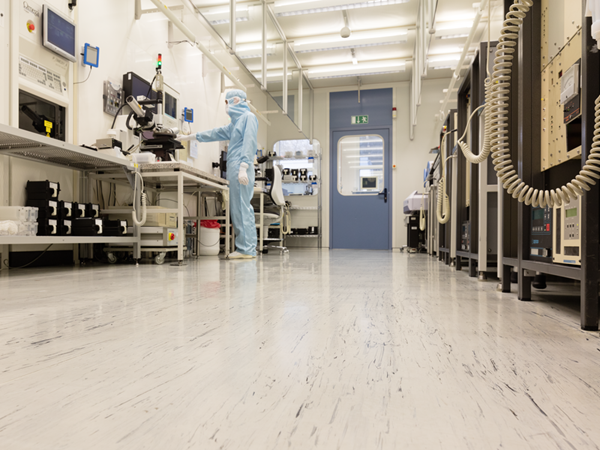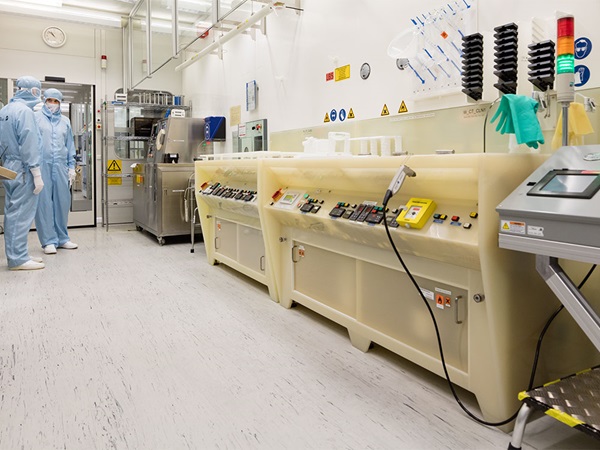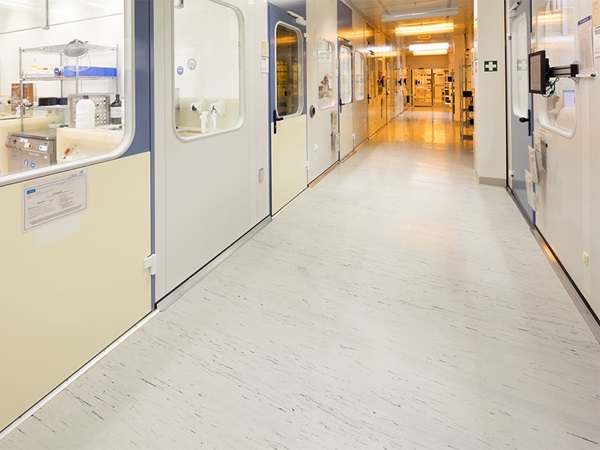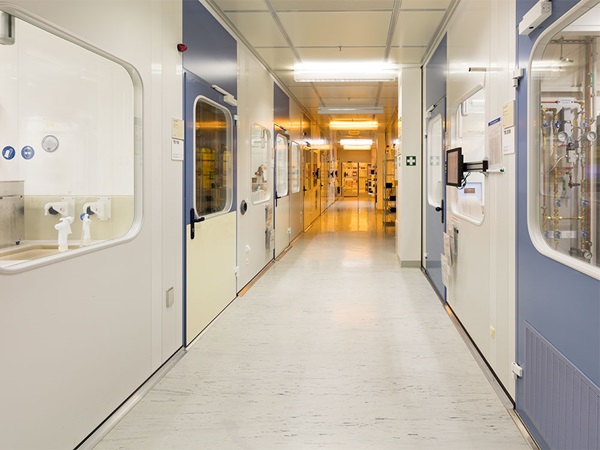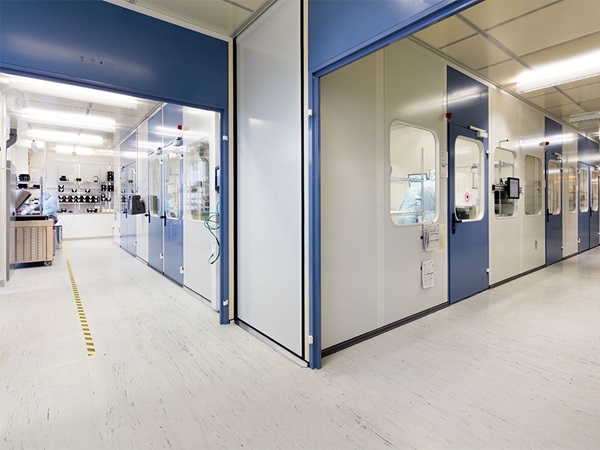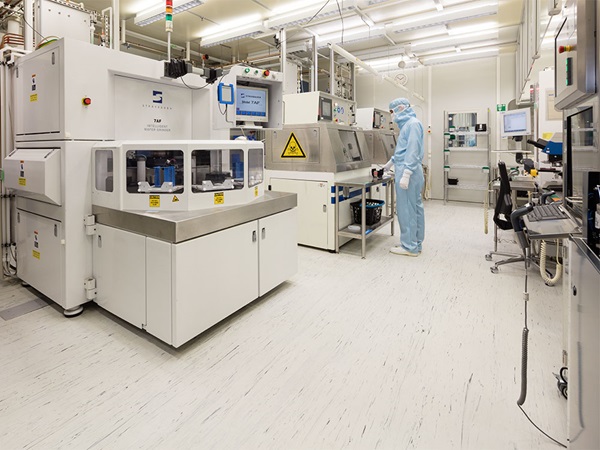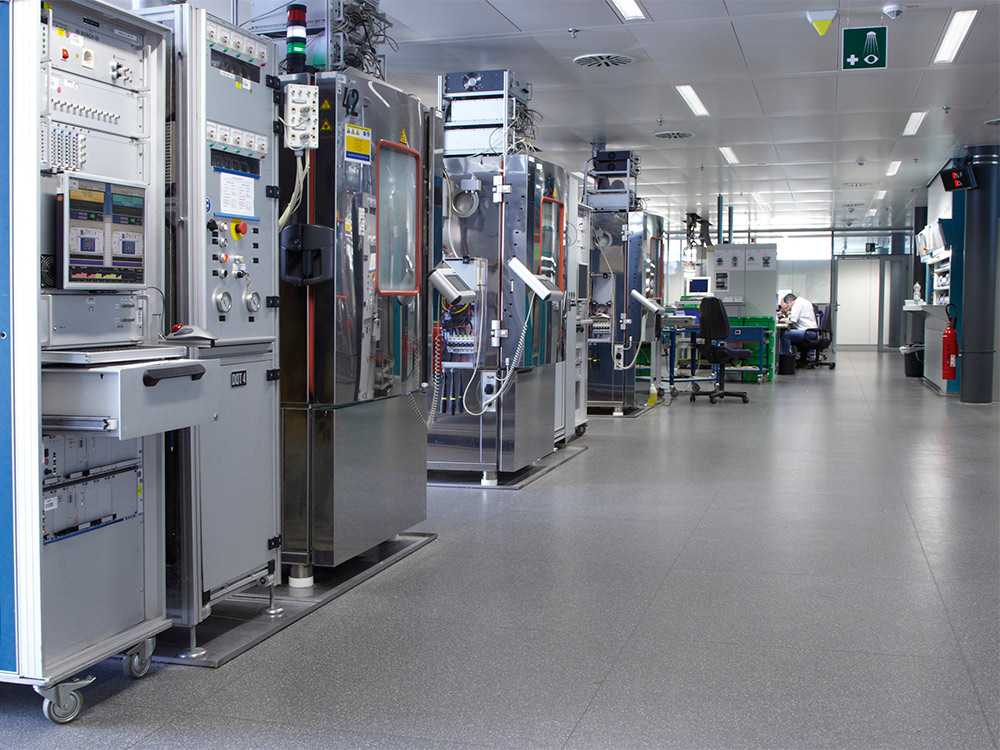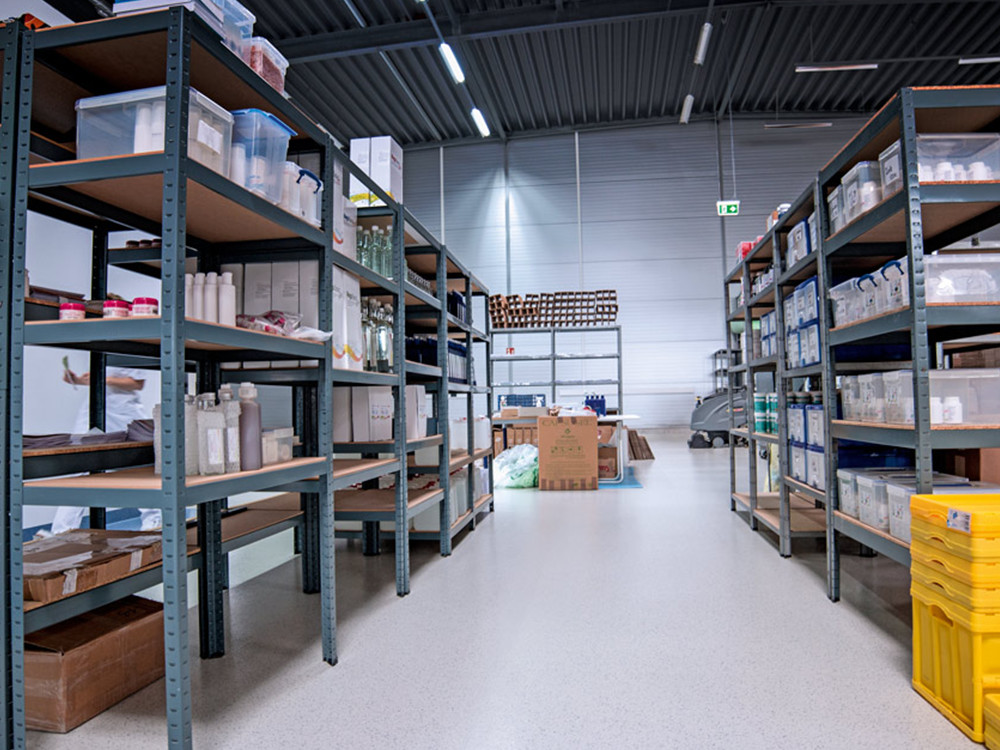A reliable part of the ESD protection chain
The semiconductor components produced in Ulm emit, receive, process and enhance microwave signals. Not only in space technology, but also in terms of everyday usage, they have become an essential element in many areas. For example, radar sensors in cars help the driver to avoid people and objects in the rear blind spot, preventing accidents. The production building constructed in 1989 in Eselsberg in Ulm belongs to Daimler AG, who had stopped their semiconductor research there. In 1996, these pursuits were transferred over to the German & French joint venture UMS. The production hall has been leased to UMS since then. When selecting the flooring for the clean rooms, the most important criteria for deciding on noraplan® were its suitability for clean rooms (ISO 5 or better) and the reliable protection of sensitive electronic components from electrostatic discharge. “This aspect is essential for UMS too,” stresses Raphael Ehrbrecht, Process & Tools 1 Manager and ESD Coordinator at UMS. “We can’t allow our customers to receive components with existing defects.”
The semiconductor properties are retained long-term
“The long durability of floorings is an important factor when it comes to clean rooms, as changing the floor covering is extremely inconvenient and costly: the machines have to be shut down and uninstalled from the room, the floor removed, the adhesive ground down – all work that cannot be carried out while operations are going ahead – we would have to completely stop production during the renovation period,” continues Ehrbrecht. “In this sense we are very happy with the rubber floor, because after this long period of usage it still lies within the defined limits for DIN EN IEC 61340, which is regularly confirmed by annual measurements and walking tests.”
The rubber floors pass all tests
In the system tests, not only the floor and shoes alone are tested, but the “person-footwear-floor” system is checked. This must work reliably, because the employees in the clean room need to be able to move freely and therefore no earthing should occur, for example via wristbands. “We let responsibly selected people walk on the flooring in their clean room footwear and look at the measurement results,” says Ehrbrecht, describing the procedure. “The nora® floorings always conform to official standards here too.” The reason behind the good long-term performance: like all noraplan® ESD floors, the noraplan® floor at UMS is made homogenously from rubber and is therefore “volume conductive”. This means that the whole machine-manufactured flooring is homogenously conductive and not just selectively – for example as with systems that are made conductive using fibres or wires. This means that in the long term there is no need to apply conductive coatings or so-called “ESD wax” to the floor.
Hygienic cleaning thanks to coating-free surfaces
nora® floorings’ lack of need for coatings is also a big advantage when it comes to cleaning. With their enduring, abrasion-resistant surface they are not only easy to care for, but also offer a lasting high standard of cleanliness: “The floors in the clean room are lightly wiped with moisture several times a day, primarily to remove dust,” explains Ehrbrecht. In the corridors and offices outside of the clean room, cleaning machines are used once a week. “The cleaning works really well and the floors look impeccable even after almost 30 years.” Ehrbrecht also views the safety of the rubber floors as a big advantage: “The surface is non-slip and anti-glare, meaning that falls are avoided.”

 Poland | English
Poland | English
